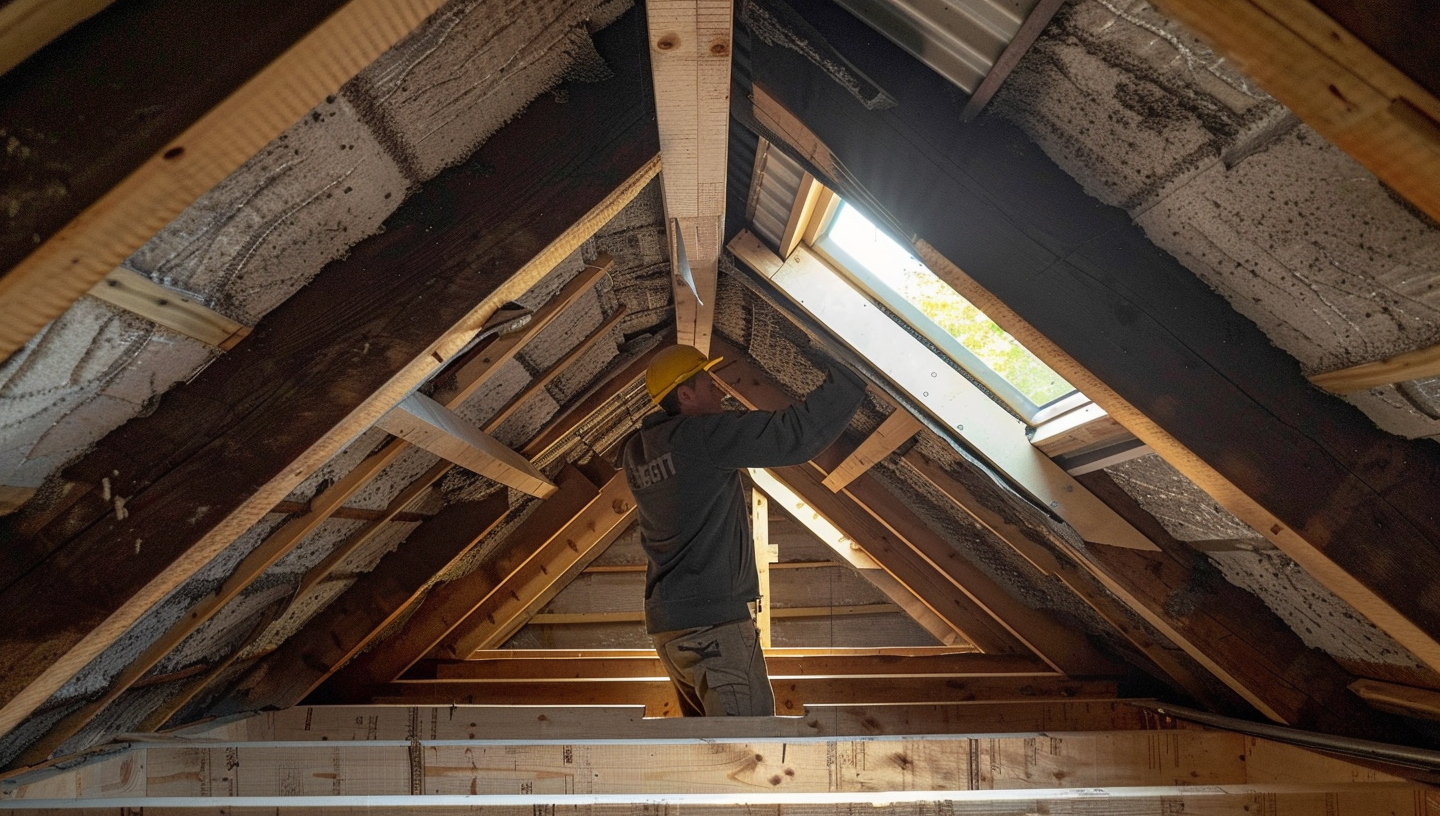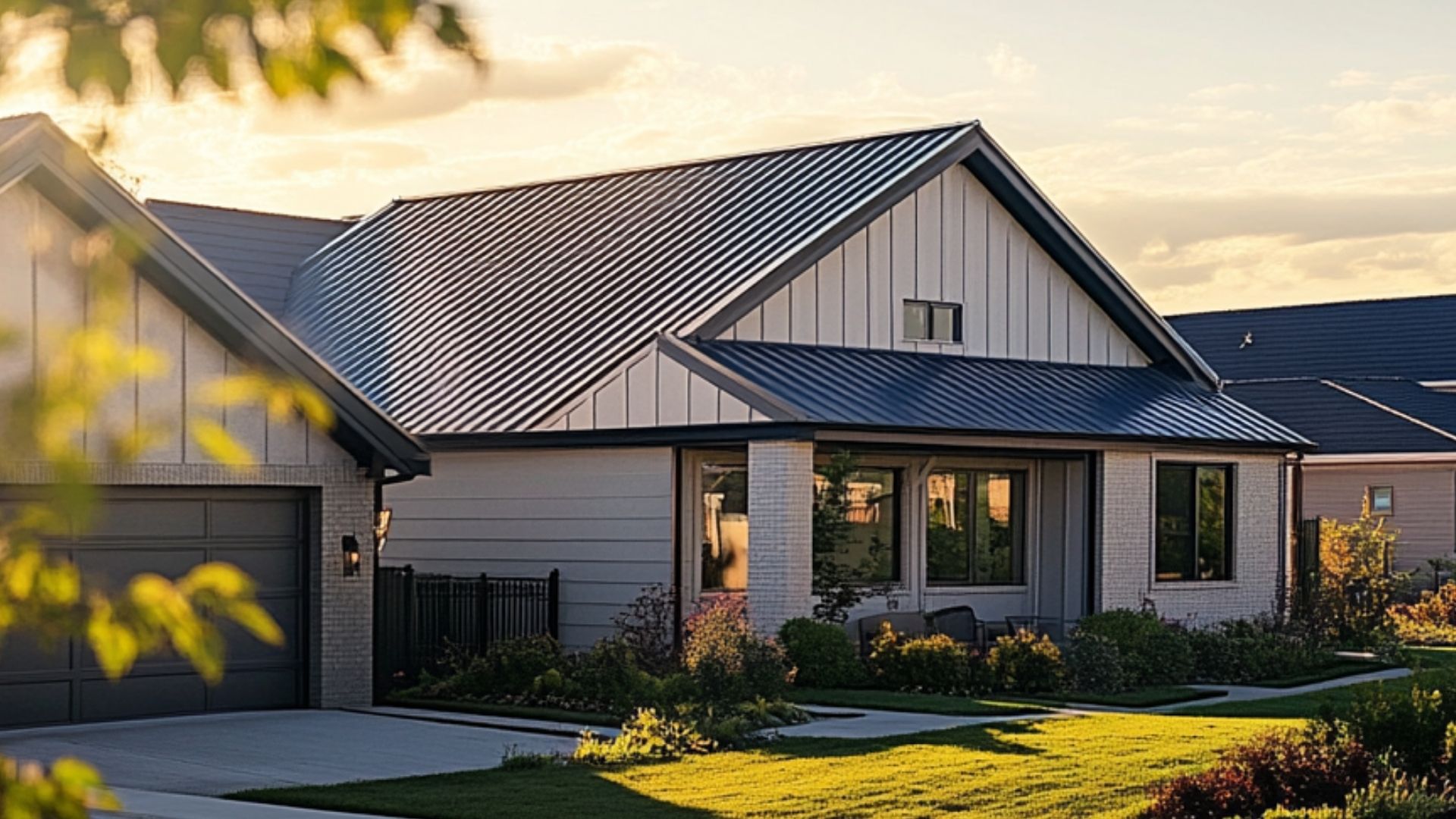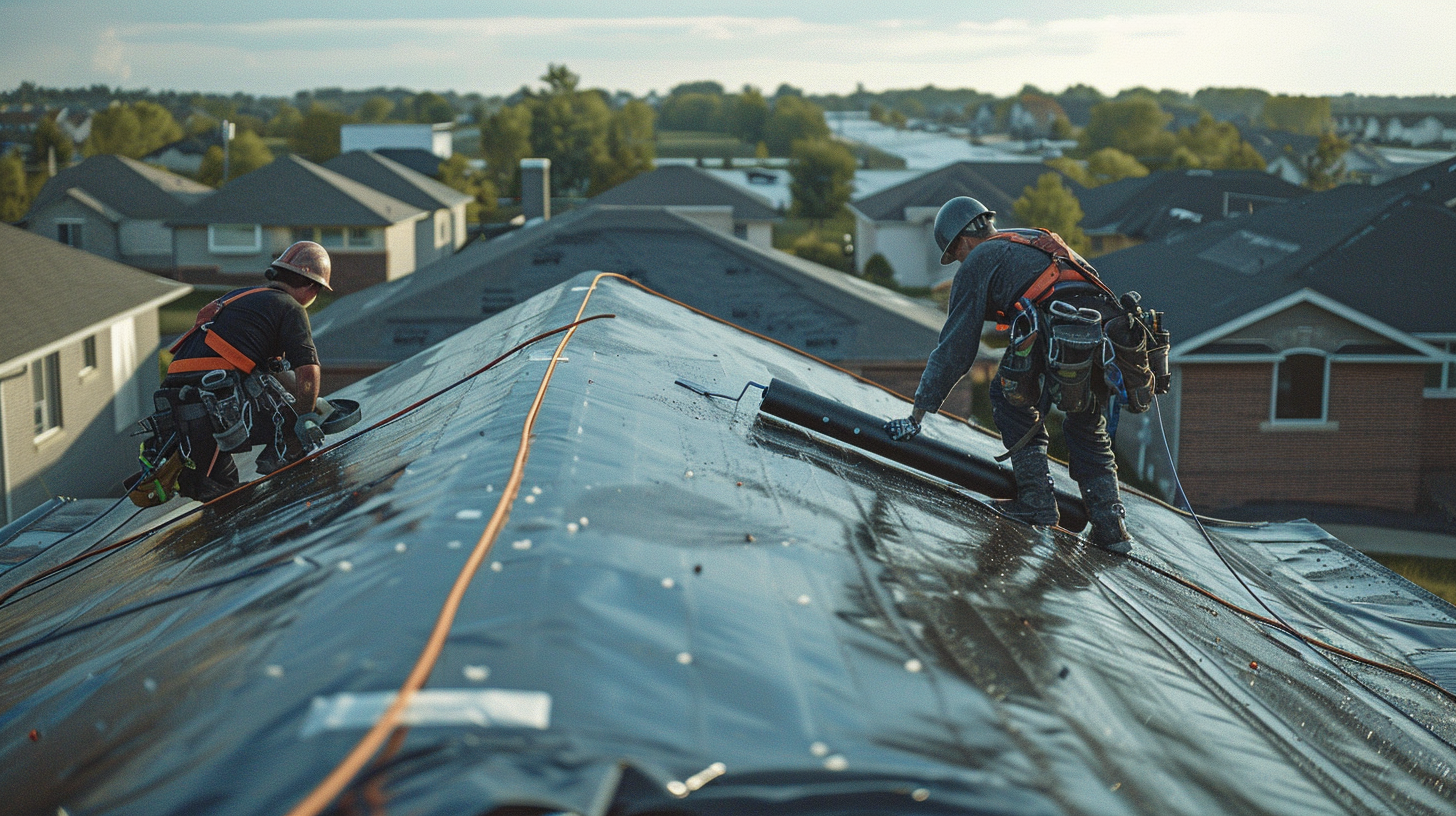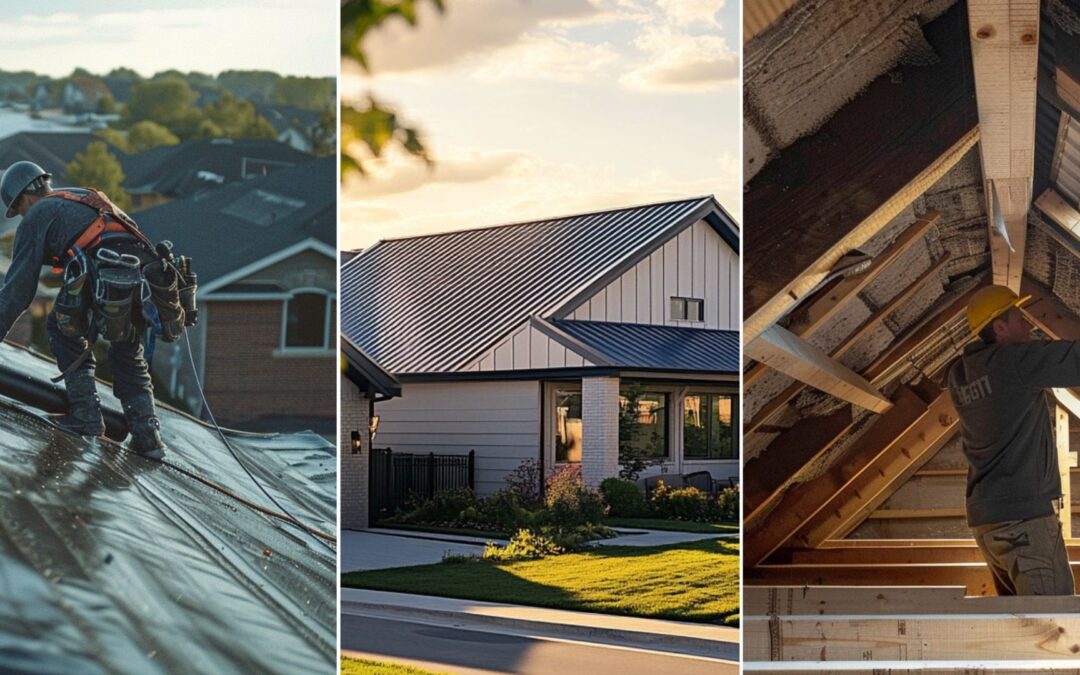Roof moisture testing is crucial in maintaining roofing systems’ integrity and longevity. Undetected moisture can lead to significant issues such as mold growth, structural damage, and compromised insulation, ultimately resulting in costly repairs and safety hazards. By conducting moisture tests, property owners can identify hidden water intrusion and assess the condition of their roofs before problems escalate. This proactive measure not only aids in preventing extensive damage but also enhances
roofing materials’ overall durability and performance. Understanding the different methods and benefits of moisture testing helps ensure your roofing investment remains protected and resilient against the elements.

Moisture Tests - What is Roof Moisture Testing - Sky Roofing Construction & Remodeling
What is Roof Moisture Testing?
Roof moisture testing is a crucial process for assessing the condition of a roofing system and identifying potential vulnerabilities that may not be visible to the naked eye. Over time, roofs can develop moisture issues due to various factors, including leaks, inadequate drainage, and environmental conditions. These hidden moisture problems can lead to significant damage, compromising the integrity of the roof and the structure beneath it. By conducting moisture tests, roofing professionals can detect trapped moisture and assess the overall health of the roofing system, allowing for timely remediation and preventing costly repairs down the line. Understanding the importance of roof moisture testing is essential for property owners who want to ensure the longevity and performance of their roofs.
Why is Roof Moisture Testing Important?
Roof moisture testing is essential to maintaining the integrity of a building’s roofing system. This process involves assessing the level of moisture present within roofing materials, which can be crucial in preventing potential issues such as mold growth, structural damage, and premature roof failure. Identifying moisture problems early on allows property owners to take corrective measures, ensuring the longevity and performance of their roofs. Understanding why roof moisture testing is necessary helps safeguard the roofing investment and the overall health and safety of the building’s occupants. There are numerous benefits of moisture testing; it becomes clear that this proactive approach can lead to significant cost savings and improved building performance over time.

Moisture Tests - Common Roofing Materials - Sky Roofing Construction & Remodeling
Common Causes of Roof Moisture Issues
Roof moisture issues can arise from various factors, often leading to detrimental roof leaks and extensive damage if not addressed promptly. Common culprits include clogged gutters, which impede water drainage, allowing it to pool and seep into the roofing materials. Damaged shingles also play a significant role, as they can allow moisture intrusion during rainfall, while impaired flashing—used to seal joints and seams—can create vulnerabilities that lead to leaks.
Severe weather conditions, such as heavy rain or strong winds, can exacerbate these existing problems, making routine post-storm inspections crucial to detect any moisture intrusion before it escalates. The consequences of trapped moisture extend beyond the roof, compromising insulation and potentially causing structural damage throughout the entire building. Regular inspections and proactive maintenance can help safeguard against these issues, ensuring a healthy and durable roofing system.

Moisture Tests - Their Vulnerabilities - Sky Roofing Construction & Remodeling
Types of Roofing Materials and Their Vulnerabilities
Moisture tests play a crucial role in maintaining the longevity and integrity of roofing systems by assessing the presence of moisture within various roof compositions and the overall roof structure. Tools such as moisture probes, meters, and thermal imaging are essential for detecting hidden moisture damage within the roof deck and membrane. This helps prevent further water damage and safety issues for building owners.
Understanding the types of roofing materials available and their vulnerabilities allows homeowners and builders to make informed decisions about roof construction, installation, and maintenance. Different materials, such as asphalt shingles, metal roofing, and flat roofs, exhibit unique properties. For example, while metal roofing boasts strong thermal properties, other materials may be more susceptible to moisture retention, leading to wet roof conditions or damage.
Ensure a dry roof and maintain dry insulation to minimize potential water damage. Consulting with a roofing expert to assess the condition of an entire roof, especially before winter, is crucial to avoid costly repairs and ensure long-term durability.
Overview of Common Roofing Materials
Regarding roof systems, various roof materials are widely used, each with strengths and vulnerabilities. Common roofing materials such as asphalt shingles, metal, tile, and wood can be susceptible to moisture in roofs, especially on commercial roofs and flat roof sections. Issues like clogged gutters, damaged shingles, and improper installation can affect the entire roof surface, leading to elevated moisture levels that might compromise the structure. These problems can also occur on slope roof systems and concrete decks, so regular roof moisture surveys and flat roof inspections are essential to maintaining roof integrity.
Using tools like an infrared imager as a diagnostic tool or consulting with roof consultants and a professional roofing inspector can help detect the presence of water and ensure the roof conditions are stable. This is particularly important following severe weather events, where high moisture can penetrate dry material, leading to the need for timely roof repairs.
By thoroughly understanding the vulnerabilities of different roofing materials and working with skilled roofing contractors, homeowners can develop an effective long-term maintenance plan and ensure the durability of their investment.
How Different Materials Respond to Moisture
Moisture intrusion can significantly impact the integrity and longevity of various building materials, making it essential to understand how different materials respond to moisture. Whether wood, concrete, or insulation, each material has unique physical properties and thermal resistance that dictate its behavior in damp conditions. A detailed description of how materials interact with excess moisture helps choose the right products for construction and waterproofing systems, ensuring long-term durability.
Various methods of moisture detection, such as flood testing, moisture readings, and moisture content, allow homeowners, builders, and contractors to accurately assess the quantity of moisture in materials and surfaces like exterior walls and insulation. Different insulation thicknesses can also affect moisture retention, influencing maintenance strategies and potential replacement costs.
Understanding how materials respond to moisture helps select the appropriate products and informs strategies for leak tracing and managing moisture, contributing to healthier, more durable building environments.
Impact of Wet Insulation on Various Roofing Systems
Moisture infiltration can profoundly impact the integrity and longevity of roofing systems, particularly when it comes to wet insulation. Understanding the effects of moisture on insulation materials is essential for maintaining a durable and efficient roofing structure. Wet insulation can lead to a cascade of issues, including reduced thermal performance, increased energy costs, and potential structural damage. Over time, trapped moisture can promote mold growth, compromise the roofing materials, and shorten the lifespan of the entire system. Wet insulation affects different roofing systems in various ways, and it is essential to conduct moisture tests to identify and mitigate these risks before they escalate into more significant problems.
Visual Inspection: The First Step in Identifying Moisture Issues
Moisture-related issues can pose significant risks to the integrity and longevity of roofing structures, making early detection crucial for effective remediation. The first step in identifying these potential problems is a thorough visual inspection. This proactive approach allows roofing professionals to assess the roof’s condition and detect any visible signs of moisture intrusion, such as discoloration, mold growth, or warping materials. By recognizing these indicators early on, property owners can prevent extensive damage and costly repairs. A comprehensive visual inspection not only aids in pinpointing current moisture problems but also helps develop a strategic plan for maintenance and improvement, ensuring the protection and longevity of the roofing system.
Key Indicators of Moisture Problems on the Roof Surface
Moisture intrusion can pose severe threats to a roofing system, often stemming from various waterproofing defects. Critical indicators of moisture problems on the roof surface include visible tears in the membrane, poorly sealed penetrations, and failed flashing, all of which can trap water and contribute to energy loss. The importance of utilizing infrared thermal imaging cannot be overstated, as it effectively reveals thermal signatures that identify wet areas in the roofing substrate. This advanced technique allows for targeted repairs, helping to mitigate further damage and reduce repair costs. Regular roof inspections are crucial not only for assessing current conditions but also for proactively managing potential vulnerabilities. By understanding these key indicators and employing modern technologies, property owners can safeguard their roofs and ensure a longer lifespan for their investment.
Areas That Require Close Attention During Inspection
Moisture tests play a critical role in safeguarding the integrity of roofing systems by identifying hidden issues before they escalate into costly repairs. During a thorough roof inspection, particular areas, especially moisture-prone ones, demand close attention. Identifying moisture-damaged regions is essential for practical damage assessment, as it allows for a clear outline of affected areas. Utilizing thermograms during inspections significantly enhances the ability to visualize and measure the extent and location of moisture intrusion, providing valuable insights into the roof’s overall condition. These detailed inspections are vital for ensuring quality assurance and preparing accurate documentation for potential insurance claims or legal disputes. By prioritizing these aspects, property owners can maintain the longevity of their roofing systems and avoid unforeseen complications.
Ensure Roof Longevity with Professional Moisture Tests
Moisture tests are essential for maintaining the health and durability of your roofing system. Identifying hidden moisture before it causes extensive damage can save you from costly repairs and ensure the long-term protection of your property. To keep your roof in top condition, contact Sky Roofing Construction & Remodeling at (210) 942-9797 for expert guidance (https://skyroofingconstructiontx.com). Schedule your next moisture test or quality roofing installation with our trusted team today and enjoy peace of mind knowing your investment is in capable hands.




